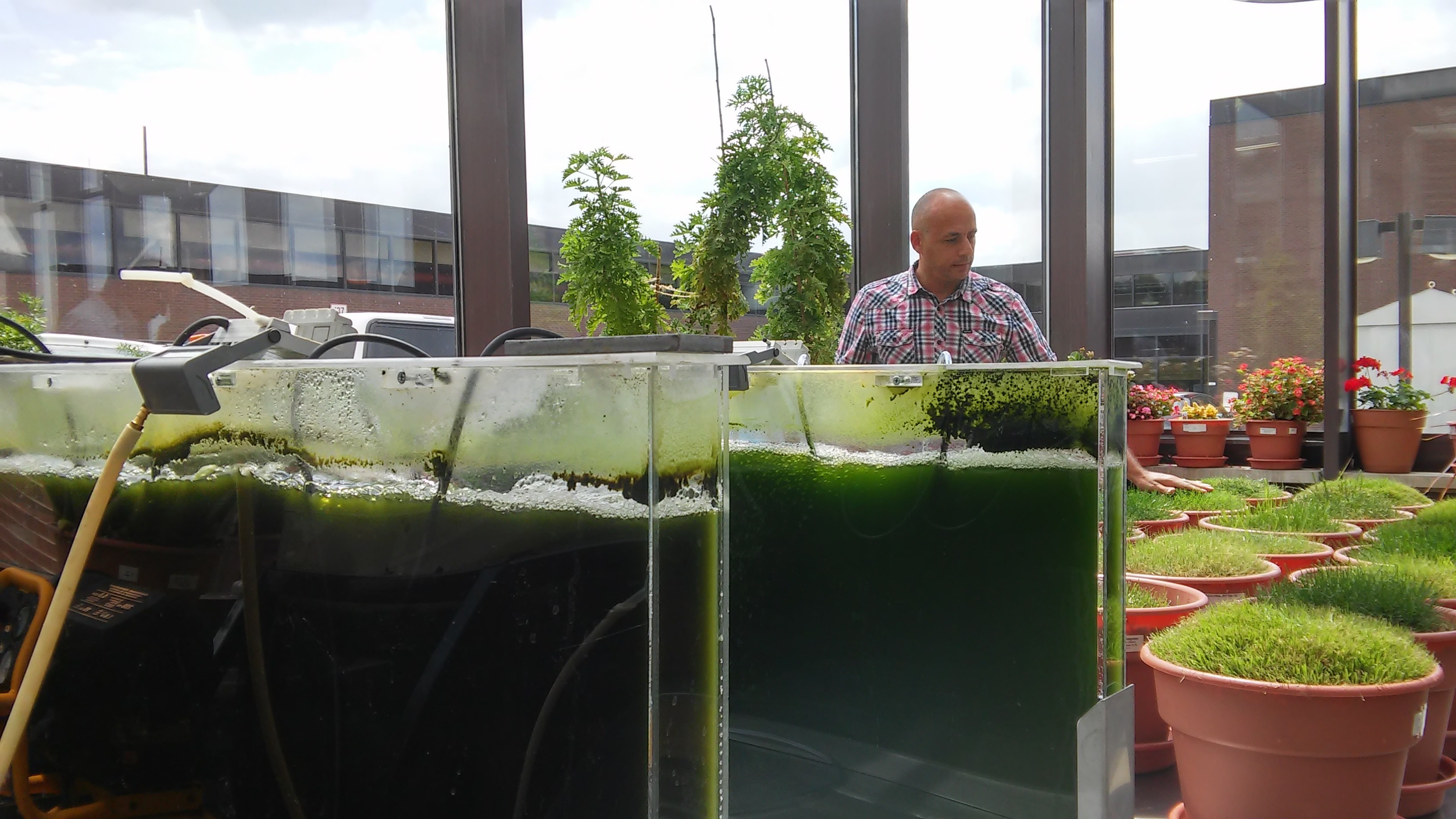BIRMINGHAM, Ala. (Sept. 1, 2015) – Last month, CNN reported on the “The Blob” that is affecting the Pacific Northwest Coast waters. The Blob consists of high concentrations of algae that occur naturally, although, during the last 30 years, algal blooms have become more frequent and intense. In addition to serious environmental impact on coastal areas, algae is also contaminating drinking water supplies near the Great Lakes. Manmade pollution levels continue to rise and enter through rivers, lake and groundwater.
 The Chicago Water Reclamation District conducts alga studies in its research greenhouse. The Pumps & Systems team recently toured the greenhouse, which is part of the district’s Calumet wastewater reclamation plant. Staffers study phosphorus removal through algae as well as possibilities for the creation of biofuel and other bio-products.
The Chicago Water Reclamation District conducts alga studies in its research greenhouse. The Pumps & Systems team recently toured the greenhouse, which is part of the district’s Calumet wastewater reclamation plant. Staffers study phosphorus removal through algae as well as possibilities for the creation of biofuel and other bio-products.Algae is classified as either a unicellular or multi-cellular microbial plant. High concentrations can increase water temperature from 3 to 5 degrees above normal and not only affect the survivability of aquatic life but also may change global weather patterns. The primary nutrients that sustain algae growth are the ammonia, nitrate and phosphate compounds typically found in agricultural pollution.
The process of metabolizing these nutrients releases foul odors and affects the taste of the water. The algae consumes dissolved oxygen and also blocks sunlight causing aquatic life to suffers or die from a condition known as hypoxia. According to the Environmental Protection Agency (EPA), these nutrients, especially nitrates, are most often found in groundwater associated with land is used frequently for row-cropping type farming.
Aurel Arndt testified this past February before the U.S. House Subcommittee on Environment and the Economy. Arndt is the CEO of American Water Works Water Utility Council, and he advocated for better management of the nutrient population as the key to a solution. He also felt that the government could use existing regulatory authority under the Clean Water Act to affect positive change.
Arndt’s testimony also highlighted the need to adapt existing wastewater equipment well as development new equipment, processes and training to reduce nutrient loading, especially during emergencies. Work on this issue is ongoing, and it is generally felt that the regulatory process will drive the development of a variety of solutions that are needed to deal with rising nutrient levels.
